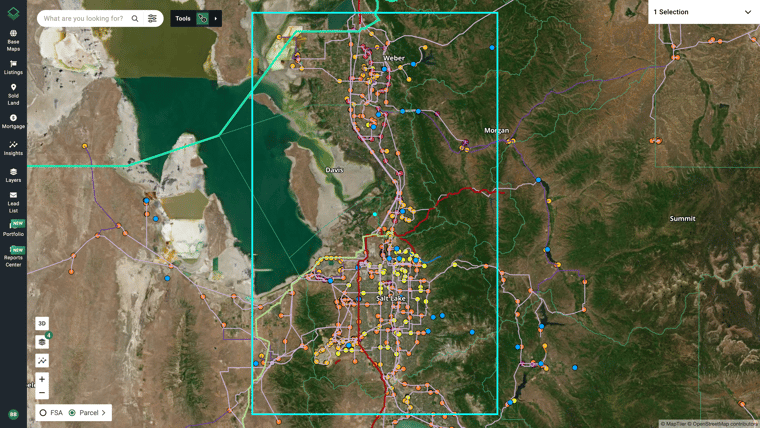Thinking about investing in land for data center development? Don’t just scout the transmission lines—do your homework.
Developing a data center in the U.S. isn’t as simple as seeing nearby power lines or substations and assuming you can plug in. Determining if actual power is available and accessible requires a technical evaluation, especially when committed power is already allocated or contracted power blocks new interconnections.
Contents
What is Stranded Capacity?
Causes of Stranded Capacity
Enhancing Due Diligence to Avoid Stranded Capacity
Using Acres to Conduct Thorough Due Diligence
What Is Stranded Capacity?
Stranded capacity refers to infrastructure that appears to have available power—but in reality, doesn’t. This occurs when capacity is technically on the books but is already committed, inaccessible due to grid congestion, or blocked by long-term regulatory bottlenecks.
At first glance, nearby substations or transmission lines may seem underutilized. But that “extra” capacity may already be spoken for in utility queues or require major upgrades to access.
Causes of Stranded Capacity
Capacity might appear available in utility queues but turn out to be illusory due to:
- Pre-allocated Resources: Capacity may be contractually committed to other projects or users waiting in long interconnection queues.
- System Constraints: Deliverability can be hindered by limitations elsewhere in the system—such as generation bottlenecks or utility connection delays.
- Hidden Upgrade Needs: What looks available on paper may require expensive infrastructure investment to unlock.
Enhancing Due Diligence to Avoid Stranded Capacity
To avoid the risk of stranded capacity, developers and planners should take a closer look at:
- Reviewing current and projected substation loads, transformer specs, and utility upgrade plans.
- Scrutinizing the voltage, conductor age, and congestion status of transmission lines.
- Using tools and consultancies that analyze both reserve margins and future supply-demand dynamics.
Checking Substation Capacity:
A nearby substation doesn’t guarantee usable power. Key due diligence steps include reviewing:
- Actual load vs. nameplate capacity
- Transformer count and specs
- Equipment condition
- Planned utility upgrades
Why it matters: Even close substations may be fully loaded or committed elsewhere. Understanding what’s really available can make or break your timeline and budget.
Checking Transmission Lines:
Proximity to transmission lines doesn’t guarantee usability. Check for:
- Current load (how much power is already flowing)
- Line age and type
- Any congestion or bottlenecks in that area
Why it matters: Outdated or congested lines can derail development plans and timelines. Without proper capacity, your project could stall or face costly delays.
Using Acres to Conduct Thorough Due Diligence
Acres.com aggregates critical land and infrastructure data into one easy-to-use platform. It helps developers:
- Visualize the grid with map overlays for transmission lines, substations, natural gas, and more.
- Research status, ownership, voltage, and other critical details for energy infrastructure.
- Quickly qualify or disqualify opportunities based on power infrastructure.

Salt Lake City, Utah area (emerging data center market) map of substations, transmission lines, power lines, natural gas lines, and power plants mapped with Acres’ Layer Library.
Final Thoughts
In a market where speed and accuracy are everything, assumptions about power availability can cost you. The solution? Ground every decision in land intelligence.
Acres empowers developers to validate infrastructure assumptions and spot red flags before they become roadblocks.
Connect with our sales team today and see how Acres can help you make confident, data-backed decisions.
